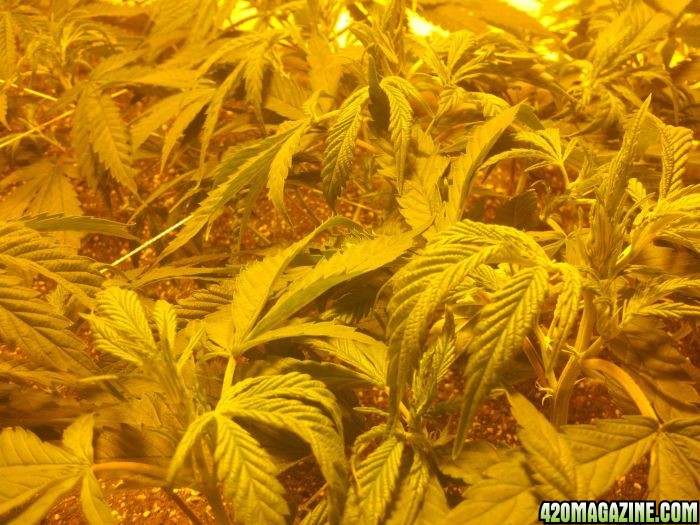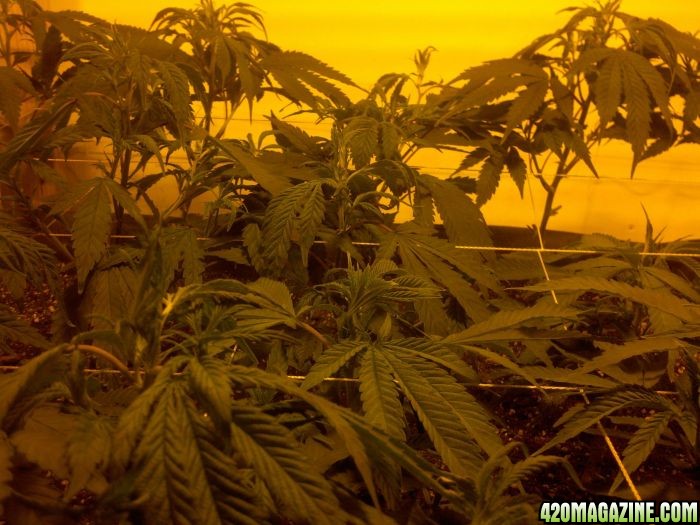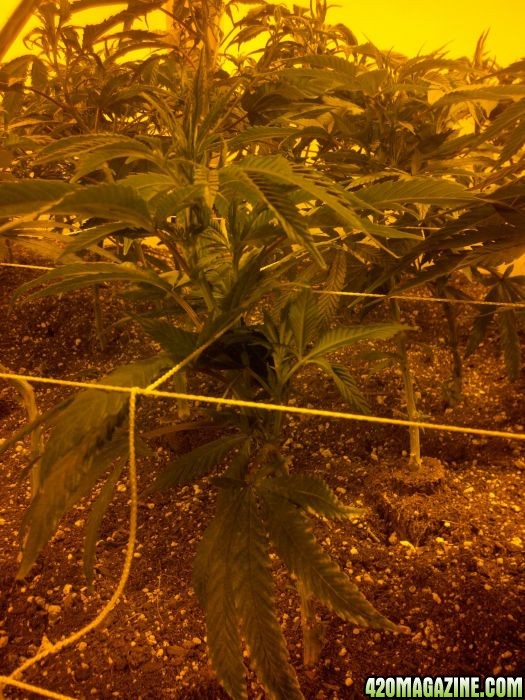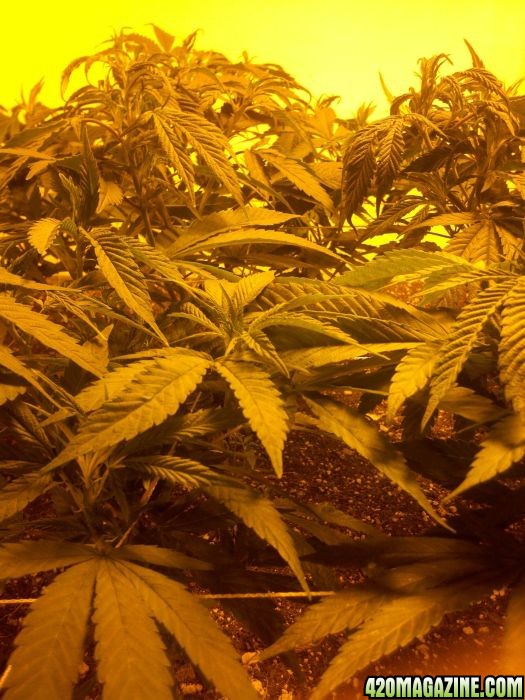Hey folks! My plants are in soil and when they were first put in they looked like they might have a magnesium defficiency (brown spots and yellowed edges), so I've been giving them cal/mag. As seen below, the new growth is curling. Next watering I plan on giving them pure water in hopes of some turn around since I'm trying to start flowering in the next couple of days. I suspect my pH meter may need to be re-calibrated, as it appears to be coming out of the tap at 8.4... I have been using a ppm meter and keeping the TDS around 300-500 since the curling started...trying not to give them too much food. I'm using liquid karma, thrive alive, and some kelp extract with a 1-1-17 ratio. There are two strains, Platinum Kush and Black Domina. Last flowering, the Domina seemed to be lighter green than the dark green Kush...I think I may have not added enough phosphorous...and possibly micro-nutrients. I also have gnats and am planning to buy some nematodes (unless I hear of a better way to get rid of them).
The Temperature range has been kept between 60-75,
The plants are under cool tubes.
Thanks for any suggestions anyone might have!
The Temperature range has been kept between 60-75,
The plants are under cool tubes.
Thanks for any suggestions anyone might have!








